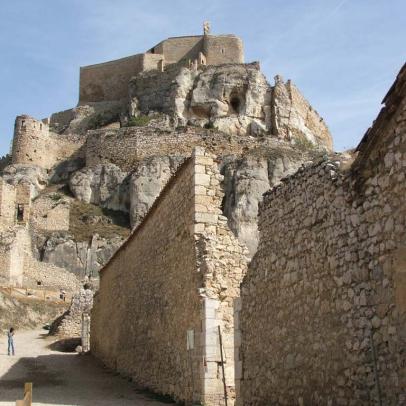The fortress, which adapts to the contours of the terrain, is perched on a hill top, affording tremendous views in every direction: both the town of Morella and the region of Els Ports. It was a Muslim fortress until 1232, when Blasco de Alagón conquered the kingdom of Aragón.
The current castle, now in ruins, was built over the ruins of previous fortresses. The first fortress in Morella was built by the Iberians, following which the Romans, Goths and Arabs made alterations. As for the walls, they were largely built in the 13th century or later, as for example Puerta de San Miguel, which was completed in the year 1360, or the prisons, built in the 15th century. Given Morella’s strategic importance, several alterations have been performed on to the castle, which saw action until the 19th century, when the country was in turmoil and several wars broke out.
The castle is divided in three levels: the entrance and the Palacio del Gobernador are in the first level; the artillery batteries are installed on the second level; and the castle is on the third level.
As regards El Cid, he attacked the mountainous and cragged country of Morella in the year 1083, in response to the order of the King of Zaragoza, al-Mutamin. He even attacked the fortress of Morella itself, reaching the castle’s entrance.
El Cid went back to Morella to stock up on food towards the end of 1089 or the beginning of 1090, and remained there until the Battle of the Pines of Tévar, which took place 15kms away from Morella. In 1092, he went back to Morella.
Rev. PAB 27.12.18


